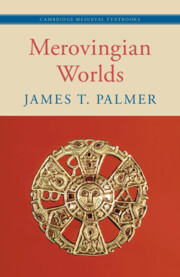Book contents
- Merovingian Worlds
- Cambridge Medieval Textbooks
- Merovingian Worlds
- Copyright page
- Contents
- Figures
- Maps
- Preface and Acknowledgements
- Note on Digitised Manuscripts
- Abbreviations
- Introduction
- 1 History and Its Historians
- 2 Identities and Status
- 3 Power in the Early Merovingian World (c. 450–613)
- 4 The Rise of the Shadow Kings (613–751)
- 5 Economies, People, and Nature
- 6 Literacy and Culture
- 7 The Frankish Churches
- 8 Religions and the Wider World
- Epilogue
- Bibliography
- Index
1 - History and Its Historians
Published online by Cambridge University Press: 22 November 2024
- Merovingian Worlds
- Cambridge Medieval Textbooks
- Merovingian Worlds
- Copyright page
- Contents
- Figures
- Maps
- Preface and Acknowledgements
- Note on Digitised Manuscripts
- Abbreviations
- Introduction
- 1 History and Its Historians
- 2 Identities and Status
- 3 Power in the Early Merovingian World (c. 450–613)
- 4 The Rise of the Shadow Kings (613–751)
- 5 Economies, People, and Nature
- 6 Literacy and Culture
- 7 The Frankish Churches
- 8 Religions and the Wider World
- Epilogue
- Bibliography
- Index
Summary
This chapter offers a survey of the principal Merovingian narrative sources. It covers the key chronicles: Gregory, the Chronicles of Fredegar, and the Liber historiae Francorum, plus their relatives. It also offers a guide to the production of hagiography in the period. Throughout the emphasis is on how we might read the stories in these sources, drawing on the competing arguments that have been put forward by scholars about the nature of the texts. Only by understanding some of the strengths and weaknesses of the common approaches to the narrative sources can readers be armed to approach the complexities of Merovingian history.
- Type
- Chapter
- Information
- Merovingian Worlds , pp. 29 - 62Publisher: Cambridge University PressPrint publication year: 2024

